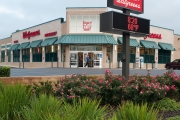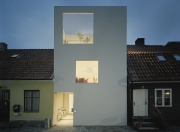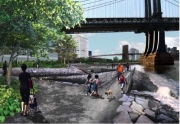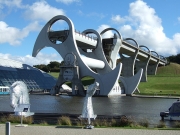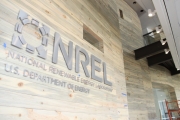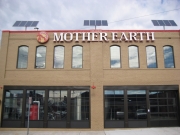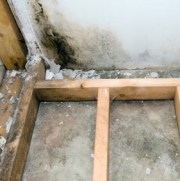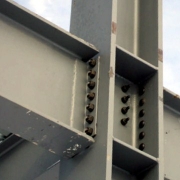When you begin a development project, you never know what you will encounter along the way. You think you have spotted a property, and you think you have determined a profitable use for that piece of land or building. However, the unknown lies ahead.
Jeff Wilson Everyday DIY Blog
Let's talk DIY
This is the place to rant, rave, brag, belly-ache, crack a joke, procrastinate, and delve into the metaphysical aspects of the DIY mindset. We’re off the map, on a tangent, and frequently off topic. This is the stuff we don’t show on TV.
Fix the Ditch: Enhancing the Brooklyn-Queens Expressway
In the 1950s, the construction of elevated and sunken highways marred many cities in the name of progress and the almighty automobile. Even brownstone Brooklyn wasn't spared. Under the heavy hand of Robert Moses, the infamous chair of the Triborough Bridge and Tunnel Authority, the Brooklyn-Queens Expressway (BQE) severed several neighborhoods in order to connect the two boroughs. Some neighborhoods fared better than others; affluent Brooklyn Heights bargained for a scenic promenade to disguise the BQE. However, their neighbors to the south along the Columbia Street waterfront, an area primarily inhabited by Italian immigrants at the time, were cut off from the picturesque portions of Carroll Gardens and Cobble Hill by a sunken, six-lane stretch of highway.
House of the Month: Elding Oscarson's Green Landskrona Townhouse
Most of the residential architecture in coastal Landskrona, Sweden, is quaint and unassumingly beautiful. For a long time there was an empty lot only a bit wider than two dozen feet on a dense street in the center of town. One day, a stark white townhouse appeared on the block, boasting elegant geometrical proportions and a transparency that commands a place in the heart of art and architecture enthusiasts. What happens to a traditional streetscape when distinctly different, yet equally gorgeous, architectural styles are juxtaposed? Jonas Elding and Johan Oscarson of Elding Oscarson architecture of Sweden wish to reveal a few of their design secrets.
Brooklyn Bridge Park: Linking Harbor, Infrastructure and the Urban Fabric
Although it is surrounded by water, New York City offers few opportunities to physically interact with the shoreline. The new Brooklyn Bridge Park proves an exception; its 85 acres of green space and recreational facilities, designed by landscape architecture firm Michael Van Valkenburgh Associates, will span 1.3 miles of post-industrial waterfront between the Manhattan Bridge and Atlantic Avenue, bracketed by the East River and Robert Moses' tiered Brooklyn-Queens Expressway.
Architectural Woodwork Restoration
Architectural woodwork restoration is a process that improves or renews the condition of existing wood materials. The task of restoring architectural woodwork can range from a small-scale, simple task that a homeowner can complete, to a complex set of tasks requiring the services of a professional in order to ensure that historic preservation guidelines are met. Depending on the scope of restoration (as defined by the material condition), uses, and affordability, there are three types of restoration: cleaning, repair, and reconstruction.
Maintaining the Falkirk Wheel
The Falkirk Wheel, constructed in Falkirk, Scotland in 2002, was developed to connect the Forth and Clyde Canal and the Union Canal so travelers could easily navigate through central Scotland. After consideration was given to several designs including a see-saw-like structure and a rolling eggs structure, a rotating boat design was chosen. British Waterways, Morrison-Bachy-Soletanche, and specialists from Butterley Engineering, RMJM Architects, and Ove Arup Consultants engineered a one-of-a-kind rotating boat lift to connect the two canals.
One of the most important climate change reduction advances in architecture and building in America is unfolding in the foothills of the Front Range outside Denver where the National Renewable Energy Laboratory (NREL) is completing a flagship for renewability and energy efficiency. The Research Support Facilities (RSF) in Golden, Colorado, were built and furnished for $67 million, comprise 222,000 square feet of zero-energy building (ZEB), were designed by RNL Design with Stantec, and were built by Colorado’s Haselden Construction. Seeking the U.S. Green Building Council’s (USGBC) LEED Platinum status, NREL is certainly practicing what it preaches: its scientists and technologists are occupying daylit spaces this summer to deliver energy strategies as they work to battle climate change and strive for national energy independence.
Electronic vs. Verbal Communication
Advancements in technology have revolutionized the way we do business, but we must not lose sight of the benefits of personal interaction. I find myself getting more and more email every day and having less time to actually talk to or even see the people I am working with. I am probably more guilty of this then many because I am what you might call a “satellite” project manager, working remotely on out-of-town jobs.
Return to Planet Earth: Building a Sustainable Brewery
When it comes to sustainability in the craft brewing industry, more often than not the focus is on ingredients. Organic and sustainable hops and malts are old news at this point and are considered by most people to be good practice rather than true sustainability. Some breweries, however, have taken the concept of sustainability and applied it not only to their products but to their build-outs and operational models. Spearheading this movement toward greener building for craft breweries is Mother Earth Brewing in Kinston, North Carolina.
Mold Remediation
A popular but false notion is that mold (a fungus) only grows within dark, wet spaces inside a building. In actuality, mold spores can be carried from the outdoors into a building by people, ventilation systems, and even pets and open windows. Once inside, spores can mature into visible colonies if proper conditions are met -- moderate temperature, available moisture, and a food source.
Going Green: Energy Options
The things that help a building use the least possible amount of electricity and natural gas are central to what makes it green. Making an existing structure more energy-efficient can be done in broad strokes or with baby steps.
Seismic Retrofit Lessons Learned: Contractual and Planning
The project was a seismic retrofit of a 15-story building constructed in 1991. The steel portion of the project consisted of systematically strengthening the moment connections throughout the building and installing over 200 dampers in a 750,000 sq. ft. office building without interrupting the operation of the tenants. The contract dictated that the work would start in the basement, progress through the ground floor and the parking garage (floors 2-5), and then continue through the occupied office floors (6-15). The contractor could only occupy three half floors at any one time and a set number of parking spaces due to contract restrictions. The contract also restricted work hours, noise levels, and delivery times. These restrictions would drive the pace of the work.
